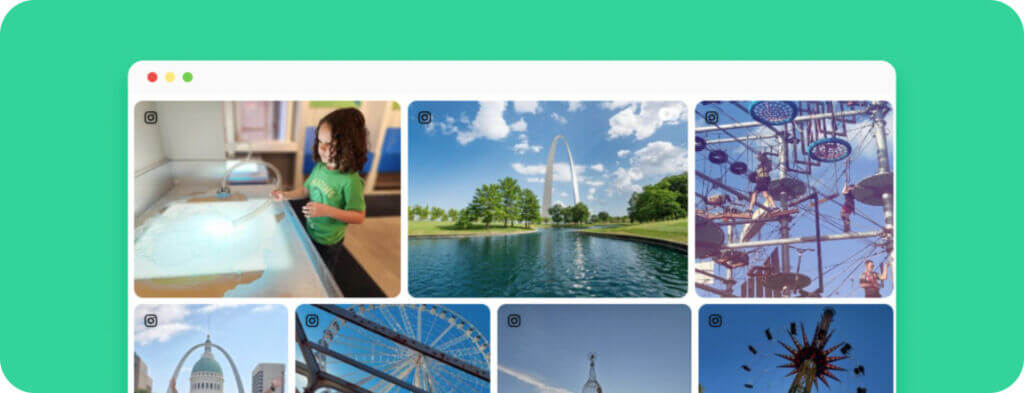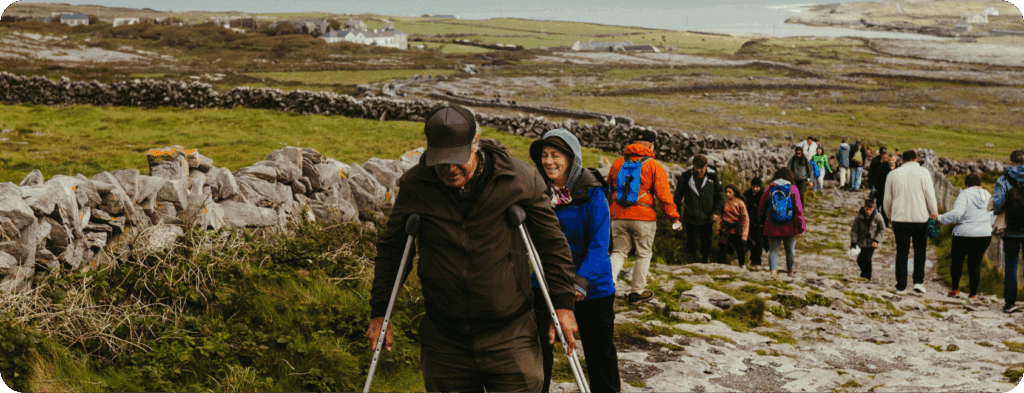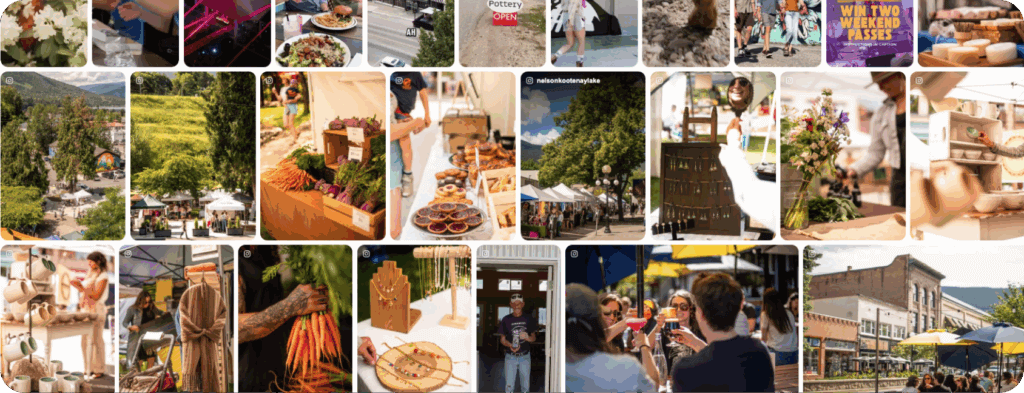
With the holiday season in full swing and the colder weather upon many of us, it’s no surprise that vacation time is on the mind. This provides a great opportunity for destination marketers to capture the attention of potential visitors surfing through their social media feeds and researching where to go on their next trip.
To help make your life easier, we’ve put together 7 tips for planning your marketing efforts in 2022 and ensuring their success.
1. Plan out a content calendar ahead of time
It may sound obvious, but visitors often plan their trips way in advance, so creating a content calendar ahead of time is a must. Promoting seasons or holidays early gives travelers useful information and enticing images that will make choosing your destination a no-brainer.
You can get inspiration for your posts from what visitors and locals are discussing online during seasonal timeframes. Look for those valuable nuggets of things that are happening in town, notes Wes Rhea, CEO of Visit Stockton, from new public art to murals and events. “Have your finger on the pulse of what’s going on,” he adds.
UGC is another valuable tool for understanding not only what potential travelers want to see and do, but also what locals are suggesting as the must-see places and exciting activities.
Following historical trends, meanwhile, can give you an idea of what to expect for the coming year, such as when visitors start getting into the holiday mood and are looking for something festive, or how soon couples plan Valentine’s Day trips in advance.
Being able to strike while the iron is hot is a recipe for success, and planning ahead by knowing not only what’s going on now but what’s coming soon can be super helpful. Handy content calendar templates can help steer you in the right direction from day one.
2. Promote events in advance
Once you know what’s going on, when, and what the hot topics are, make sure to promote events in advance to capture your visitors’ attention. For example, if cafes appear to be the trend, promote newly opening ones in your area and highlight what makes them stand out from the crowd. Whether it’s artisanal pastries, Insta-worthy coffee art, a gorgeous covered patio, or pet-friendly spots, your visitors will want to know.
If travelers seem to be on the hunt for adventure, promote events related to excursions, sports, hiking trails, ski hills – whatever activities your destination has to offer! Visitors can see what the options are and tailor their vacations around the timeframes that will suit their interests best.
Planning ahead for seasonal activities is also a must. Toronto’s Historic Distillery District, for example, began promoting its annual Winter Village experience on its Instagram account at the beginning of November. They even posted a video of the huge Christmas tree being delivered, since one of the draws of the event is seeing it get lit up.
Finding locals or frequent visitors who consistently post about a destination or trend and noting when trends start and finish can also help in determining the flow of travel to your region. They live and breathe the area, after all, and know of all the best experiences.
3. Create evergreen blog posts to update annually
Having a constant stream of current content can be time-consuming, but it doesn’t have to be. Create evergreen blog posts that can be updated every year to highlight top events, activities, and attractions in your destination. This could be the top 10 places to visit, or themed pieces like the 10 best family-friendly activities.
With a quick tweak of the intro and conclusion, and the adjustment of dates for recurring events and staple venues, a blog post from two years ago can quickly become current again.
A great example of this is Sunshine Coast Tourism for British Columbia, Canada, who curate a directory of local businesses with updated information on featured venues. Blue Mountain Resort in Ontario, meanwhile, has a popular Story on its Instagram page called Trail Tips featuring a video with a certified hike leader which they promote year-round.
4. Create and schedule social content in advance
Once you have the insights you need, save yourself some time by creating and scheduling social content ahead of time. This frees up time to capture on-the-fly moments in live videos and allows you to share UGC from visitors.
A mix of scheduled posts that auto-publish at a preset date and time, and real-time posts on your most popular social networks gives your marketing efforts some texture and shows different perspectives on local events and activities.
5. Collaborate with other DMOs
Love what other DMOs are doing? Ask to collaborate! Many destinations appeal to the same visitors, so partnering with them to cross-promote events can add value to both experiences.
Butler County, for example, keeps a directory of local businesses constantly updated, including not only detailed information about the businesses in the area and what they offer, but also delivery options and deals. The header breaks things down into useful categories, like where to stay, where to eat, how to explore, and an events calendar.
6. Focus on enticing images and keywords
We’ve all been cooped up for a long time, so focus on keywords and images that will get potential visitors excited to travel again. This might include beautiful landscapes, beaches, natural wonders, or even secluded locations that are less known.
After being at home for so long, visitors are not only looking for a destination, but a destination that is worth the wait.
7. Keep all types of families in mind
Keeping all types of families and visitors in mind can help widen the appeal of your destination. Consider family types that might be multigenerational, those that include relatives of differing ability levels, families who are reuniting for the first time in years, groups of close friends, or even like-minded travelers meeting for the first time.
Highlight experiences that can accommodate all ages and interests, from adventurous to more laid back. Note things like wheelchair access or mobility aids, what ages an activity or destination will appeal to most (are kids permitted?), and even if the destination is pet friendly.
The more information visitors have, the easier it will be for them to plan a trip with your destination in mind.
The bottom line
Despite all the uncertainty of the past two years, planning ahead allows you to create a succinct marketing strategy that highlights the best of your destination without leaving you with a headache. Even if that plan changes based on updates surrounding travel restrictions or changing priorities, building a plan ahead of time enables you to react faster.












